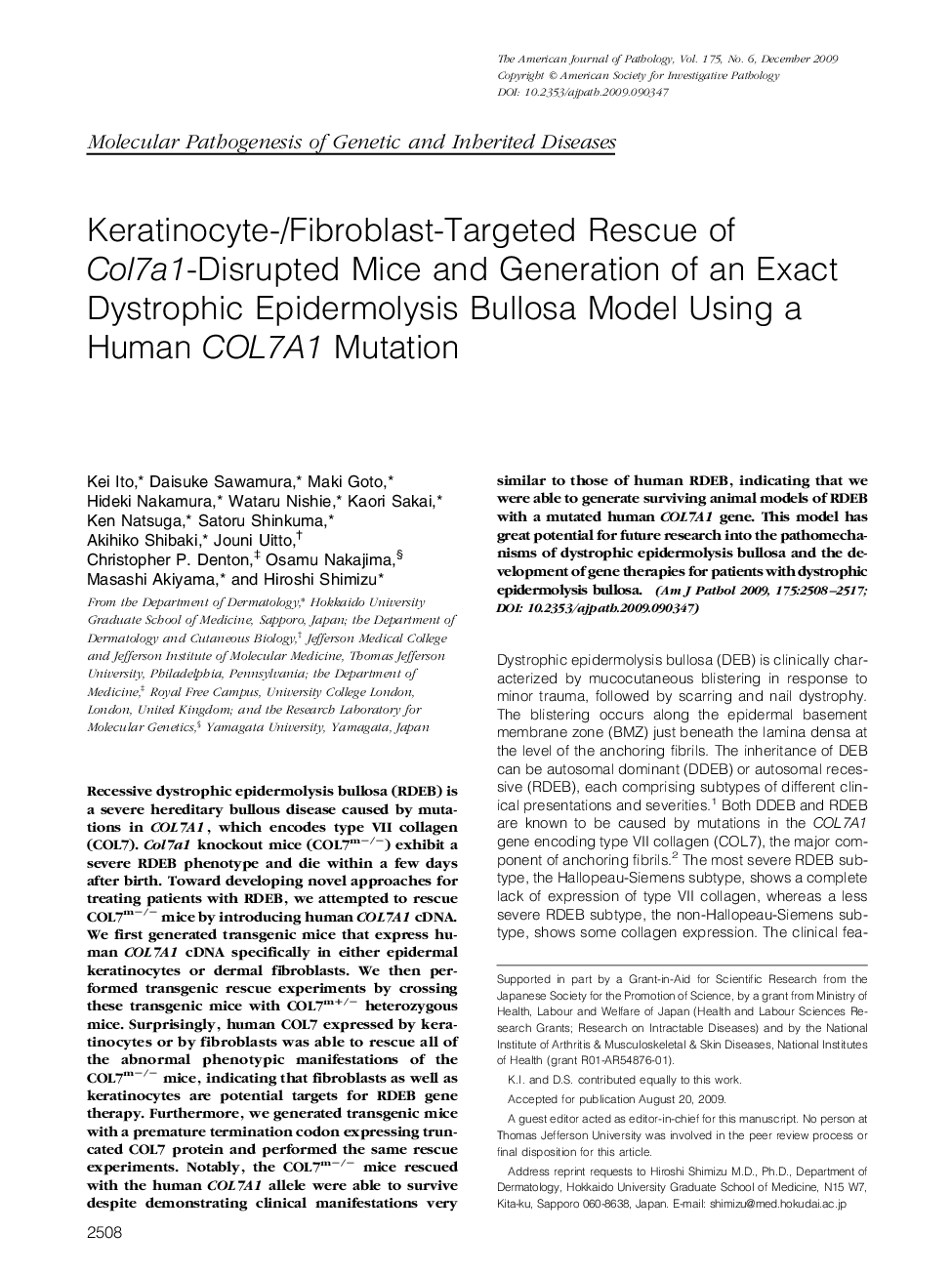| Article ID | Journal | Published Year | Pages | File Type |
|---|---|---|---|---|
| 5936416 | The American Journal of Pathology | 2009 | 10 Pages |
Recessive dystrophic epidermolysis bullosa (RDEB) is a severe hereditary bullous disease caused by mutations in COL7A1, which encodes type VII collagen (COL7). Col7a1 knockout mice (COL7mâ/â) exhibit a severe RDEB phenotype and die within a few days after birth. Toward developing novel approaches for treating patients with RDEB, we attempted to rescue COL7mâ/â mice by introducing human COL7A1 cDNA. We first generated transgenic mice that express human COL7A1 cDNA specifically in either epidermal keratinocytes or dermal fibroblasts. We then performed transgenic rescue experiments by crossing these transgenic mice with COL7m+/â heterozygous mice. Surprisingly, human COL7 expressed by keratinocytes or by fibroblasts was able to rescue all of the abnormal phenotypic manifestations of the COL7mâ/â mice, indicating that fibroblasts as well as keratinocytes are potential targets for RDEB gene therapy. Furthermore, we generated transgenic mice with a premature termination codon expressing truncated COL7 protein and performed the same rescue experiments. Notably, the COL7mâ/â mice rescued with the human COL7A1 allele were able to survive despite demonstrating clinical manifestations very similar to those of human RDEB, indicating that we were able to generate surviving animal models of RDEB with a mutated human COL7A1 gene. This model has great potential for future research into the pathomechanisms of dystrophic epidermolysis bullosa and the development of gene therapies for patients with dystrophic epidermolysis bullosa.
